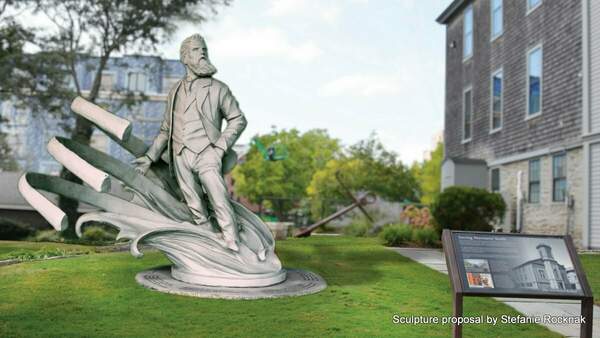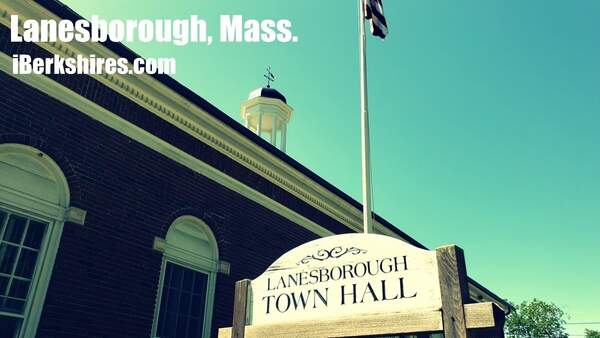
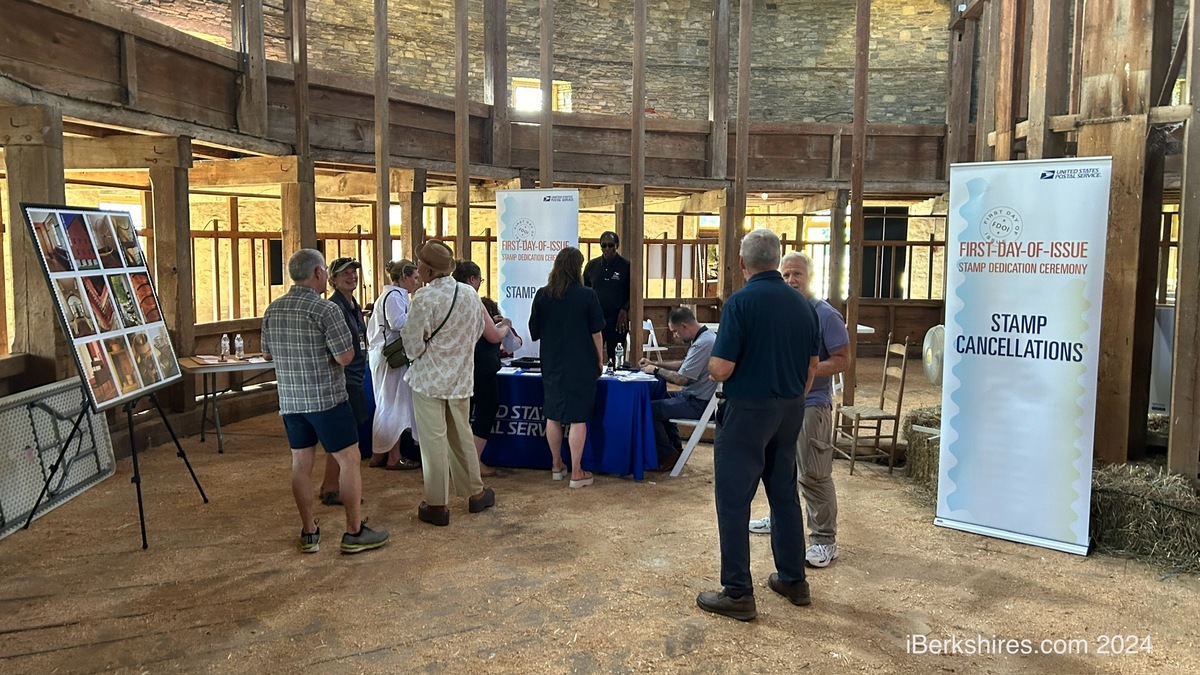
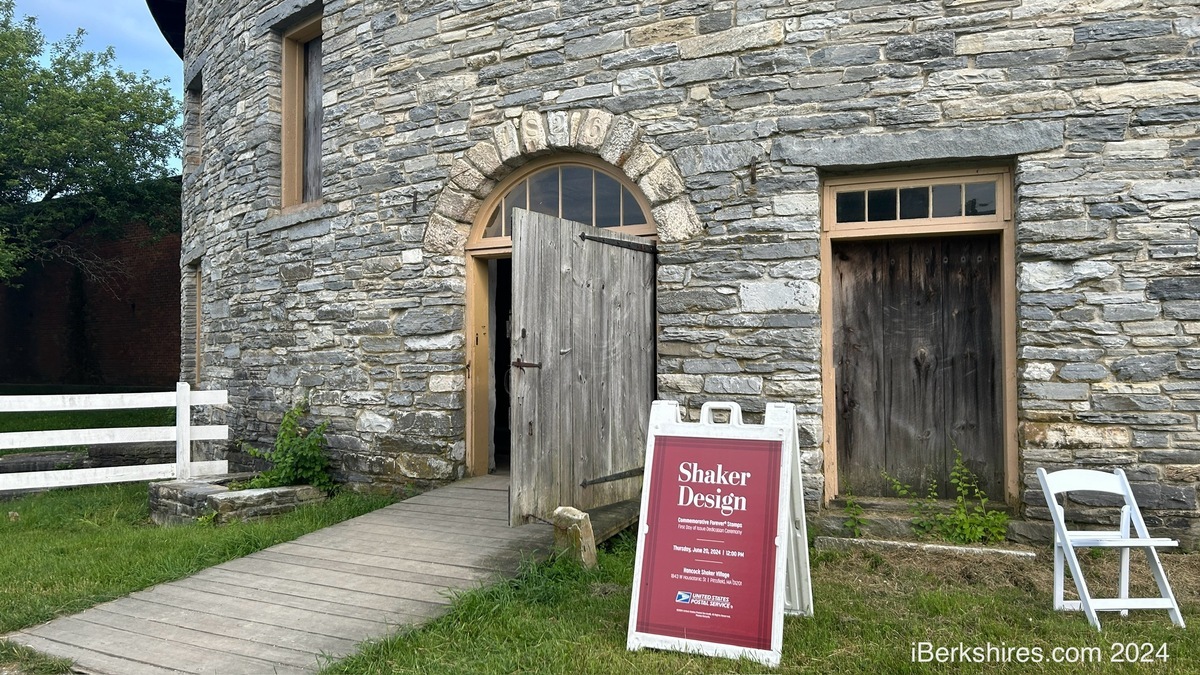
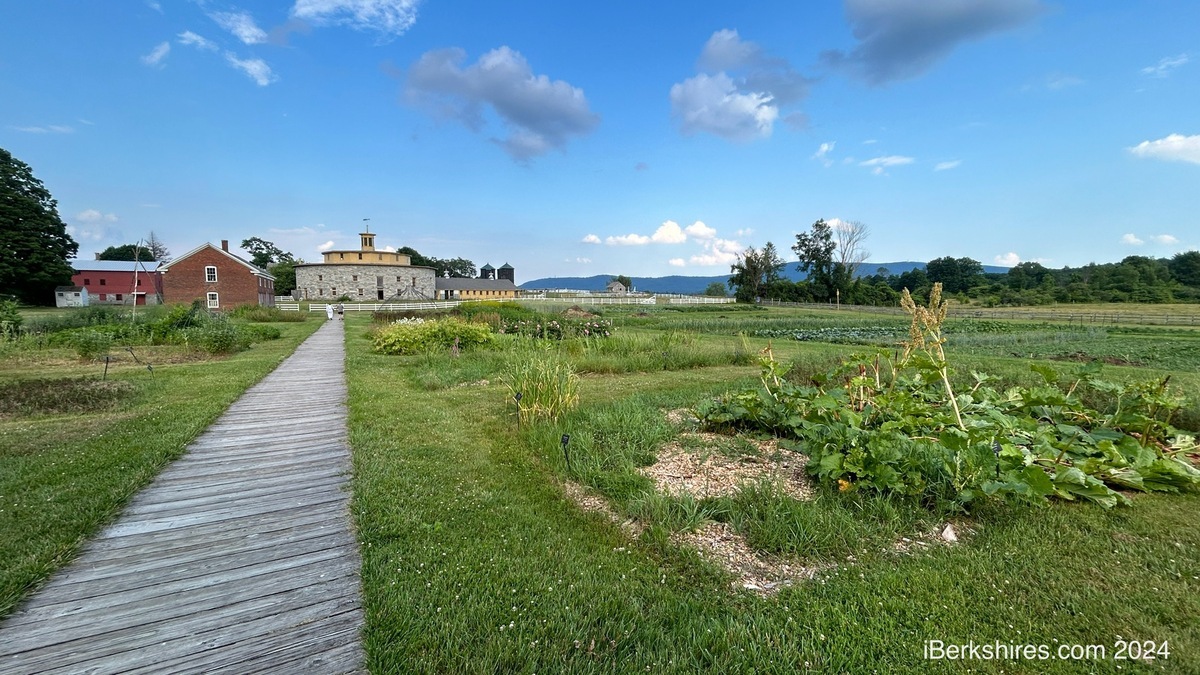

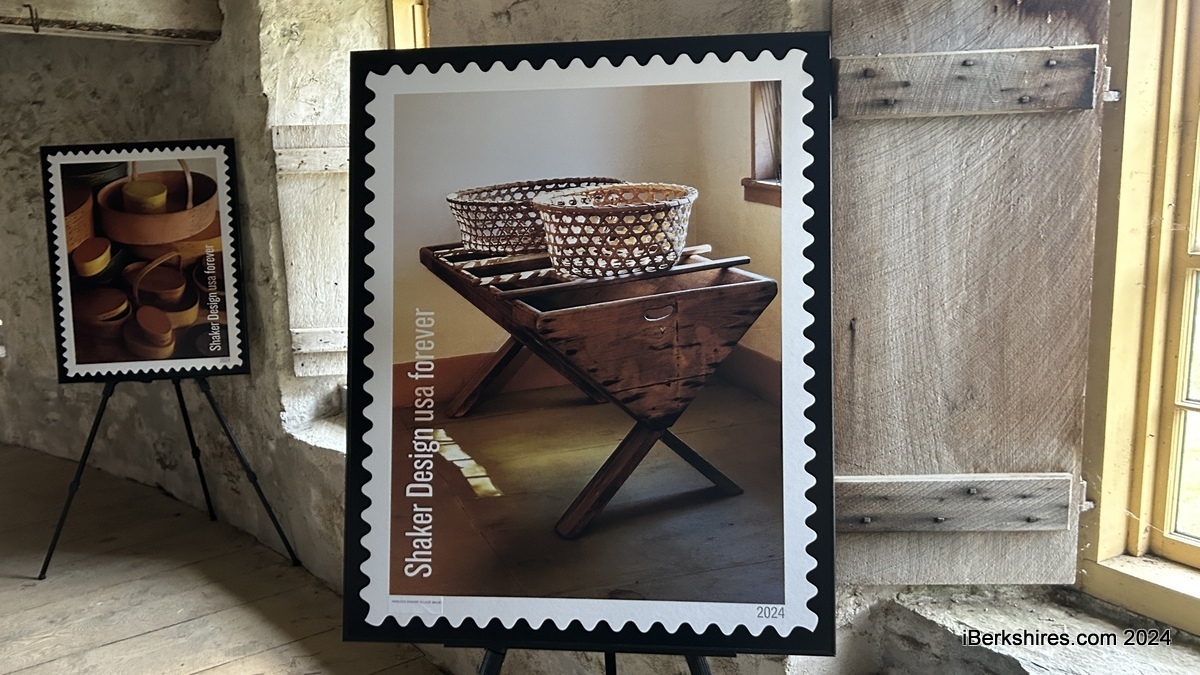
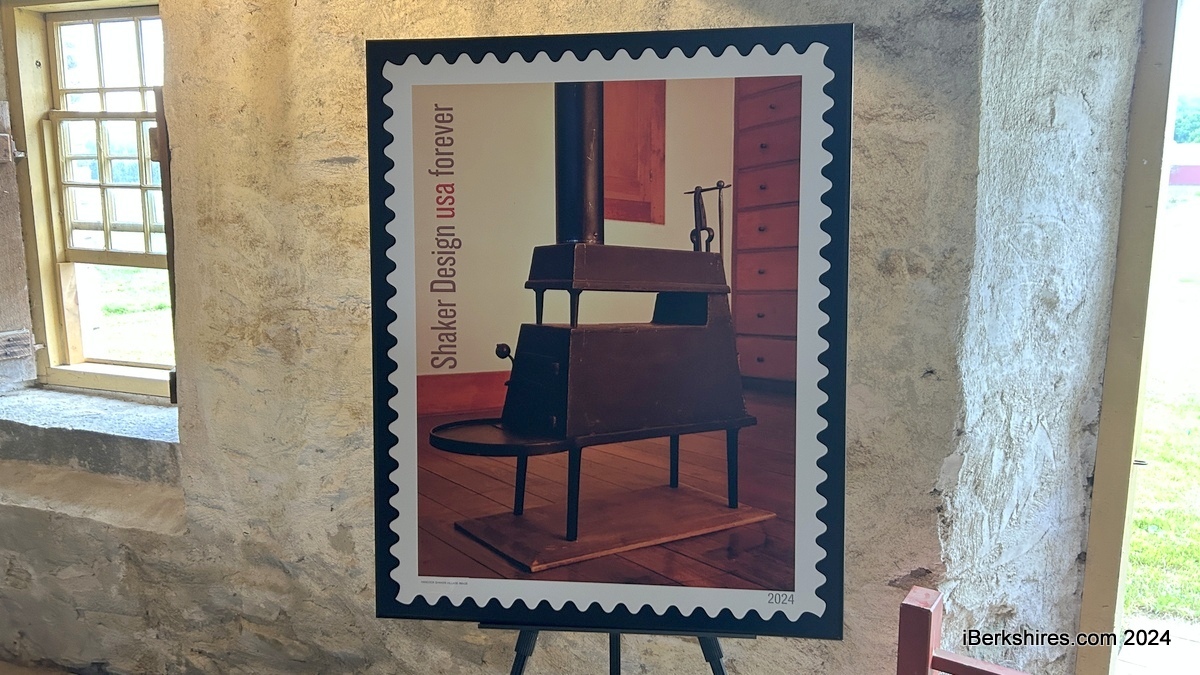
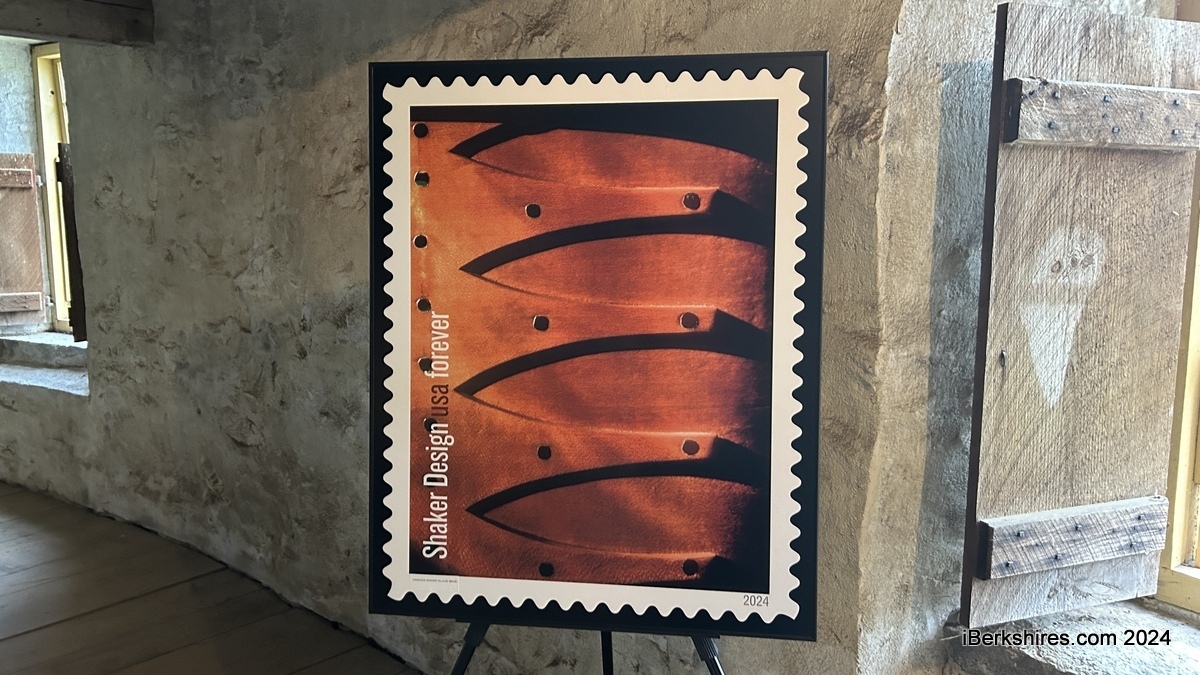
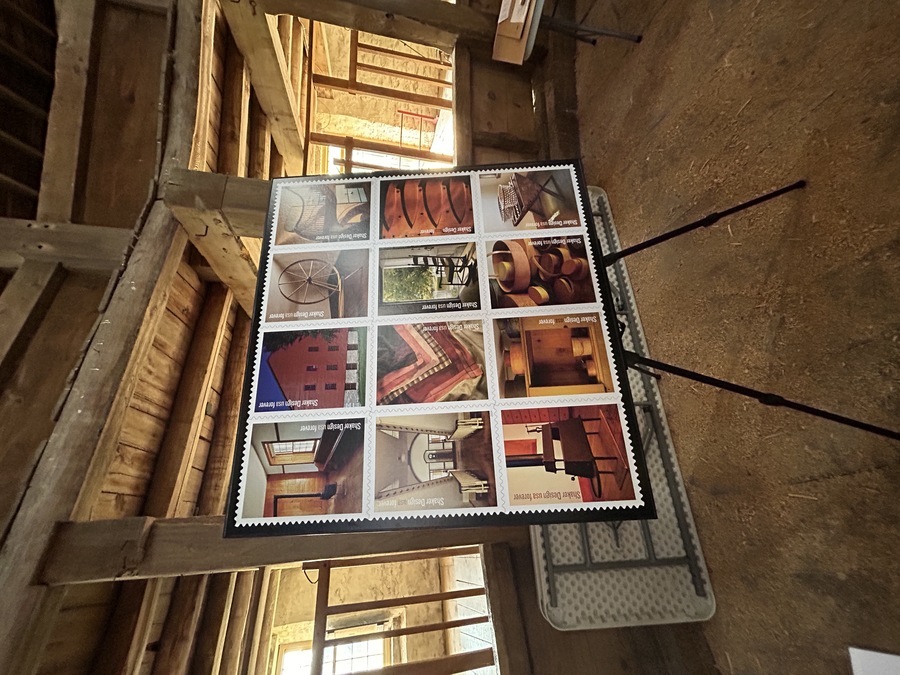

Hancock Shaker Village Immortalized on Forever Stamps
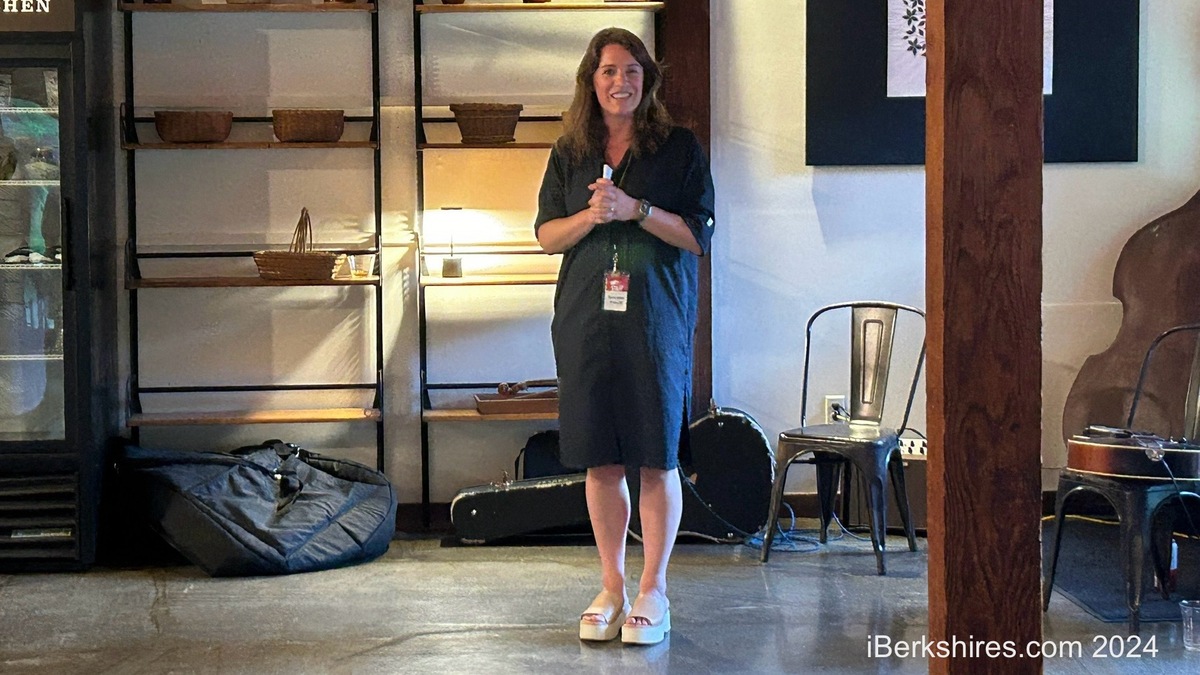
PITTSFIELD, Mass. — Four images of Hancock Shaker Village are now immortalized in U.S. Postal Service stamps.
These are part of a collection of 12 stamps that commemorate the 250th anniversary of the Shakers' arrival in America and highlight the religious group's knack for minimalist, functional, and high-quality products.
Director and CEO Carrie Holland said these stamps, in some ways, reaffirm the village's legacy as a significant part of American history.
"This USPS forever stamp is a true testament to the many dedicated historians, curators, collectors, conservationists, academics, operators, educators, and admirers that have helped preserve this important part of American history," she said.
"The message of stewardship very much rings true today. Every day, the team here at Hancock Shaker Village takes very seriously the responsibility to preserve this slice of American history and ensure we can share it with generations to come."
The photographs taken by Michael Freeman show the Brick Dwelling's meeting room, "swallowtail" joints in a bentwood box, a stove in the Sisters' Waiting Room of the Brick Dwelling, and cheese baskets in the Sisters' Dairy. Designs were done by Derry Noyes, an art director for USPS.
Stamp collectors and community members flocked to the village during Thursday's hot weather with free admission for the first day of issue. At night, a reception was held for friends of the village.
The 12 stamp designs were enlarged and displayed along the perimeter of the 1826 Round Stone Barn with a pop-up shop in the center.
"We had a very strong attendance," Director of Engagement Michael Crotty reported.
"The Postal Service has done six of these events around the country, that as of recent, and we were by far the largest that they've had. They sold out of what they brought today and just a huge turnout and a great success of both the community and collectors or people who are from different states to get the stamp."
These stamps have been years in the making, he said, with the project beginning about six years ago and the village learning it would be the launch site. The historical and cultural destination will continue to celebrate the Shakers' anniversary with events throughout the summer.
"Really what made today special is we were chosen to host it but it's a celebration of all the Shaker communities that are still around and really celebrating, you know, their their arrival and what has been accomplished in all that time," Crotty explained.
Michael Henry, stamp development specialist for USPS, explained that the launch location was chosen because the village has four images in the set and it has the infrastructure to support the event.
"It just works," he said. "It's a spectacular setting."
Also getting a stamp was Shaker Village of Mount Lebanon in New Lebanon, N.Y., just over the mountain. The Fruitlands Museum in Harvard has three; South Union Shaker Village in Auburn, Ky., has two and Shaker Village of Pleasant Hill, Harrodsburg, Ky., and Canterbury (N.H.) Shaker Village each have one.
Henry explained that the stamp designers look at images that would work well as a miniature work of art. Factors such as color and composition are taken into consideration in the process which takes about three years.
"We want them to express joy in looking at it and go, 'Wow, this is something cool,'" he said.
"But for me, personally, I learn about so many new subjects every year through the stamp program. Shaker design, yeah you've heard of Shakers, there was a style of work, but to come here and learn about the barn and see how they built their dwelling and to understand the subject. It's very cool."
Holland explained that Shakers are widely recognized for seeking the universal language of design and their eye for attention, discipline, and craft and appreciation for simple beauty has helped cement their place in the study of design across many disciplines.
The village sees countless visitors from across the world who are eager to get a closer examination of the Shaker design setting, she said.
Two years ago, plans to reimagine the visitor's center were announced and will soon be finalized.
"With stewardship and long-term sustainability in mind, we are thrilled to be standing at the edge of an exciting year ahead as we finalize our plans to take a very significant step forward with our capacity to preserve the Shaker legacy," Holland said.
"Our plans for a complete renovation of the visitor center and the center for Shaker studies are nearing full maturity. The vision of this renovation will fundamentally change how we are able to care, preserve, display, and interpret the thousands of objects in our impressive collection."
While the Shakers lived separately from the rest of society, they did rely on the Postal Service to correspond with other communities and widen the market for their products. In the 1840s, they donated land for a new railroad stop, "Shaker Depot," on the Boston and Albany line, and the West Pittsfield post office was established at the stop.
Shaker Augustus W. Williams was the postmaster from the 1850s to the 1880s, handling his community's mail and the mail of Pittsfield neighbors.
Tags: post office, stamps,



